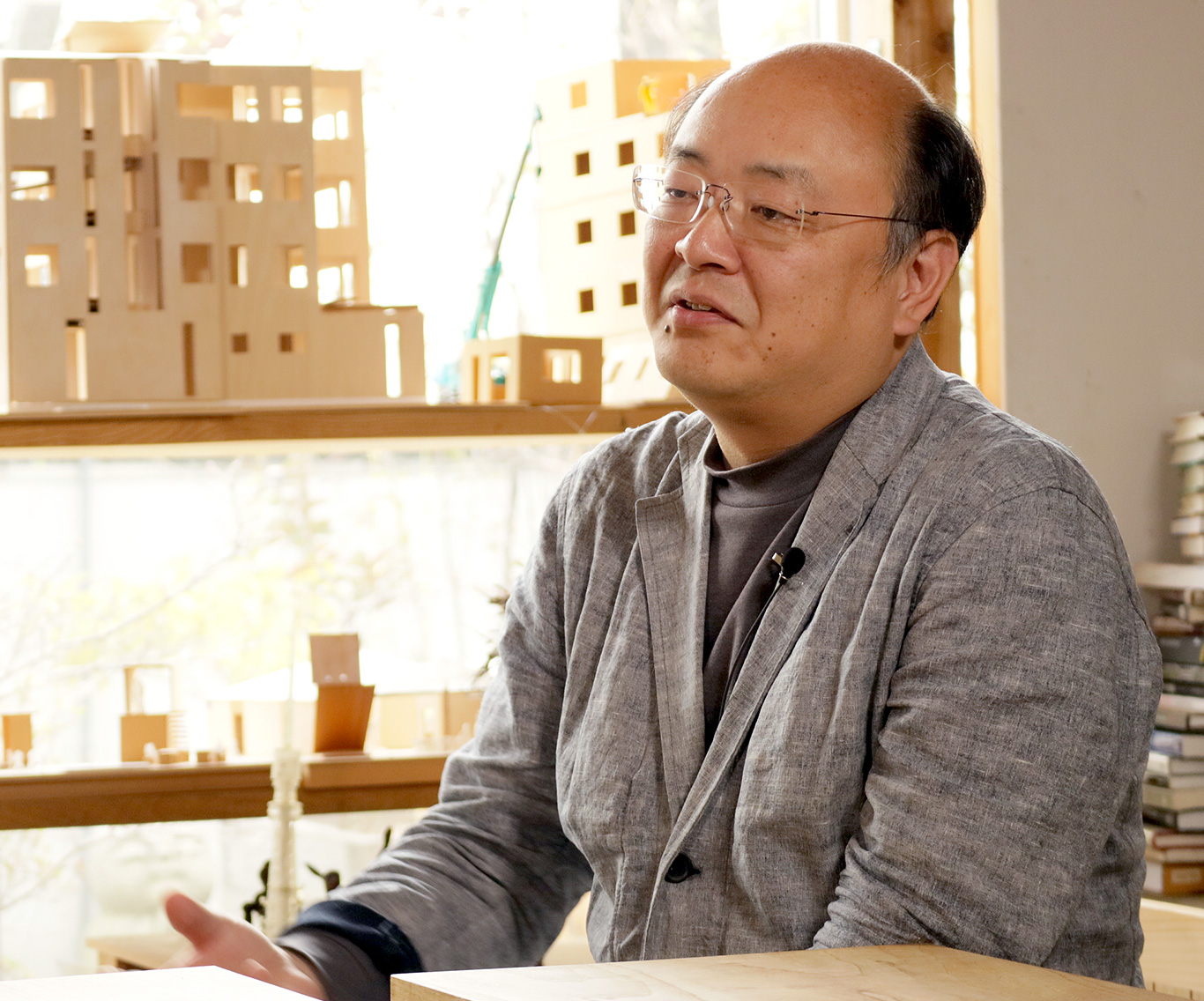INTERVIEW
People at the forefront of the various fields involving trees and greenery.
What are you thinking? What kind of future do you see?
In the study of urban wooden buildings,
there is no one to follow.
Professor Mikio Koshihara
The University of Tokyo Institute of Industrial Science Engineering and Design for Timber Structures
History without precedent
Japan’s history of wooden architecture is said to go back over a thousand years. However, Japan has almost no multistory wooden buildings.
The tenshukaku of Japanese castles and yagura of the Jomon period are about the only buildings that could considered multistory. The inner space of the famous five-tiered pagoda of Horyu-ji Temple is a single floor and the Great Buddha Hall of Todai-ji Temple is a one-story building.
To make multistory wooden buildings, we must use trial and error.

Connecting Japanese affection for trees to technical strength
Japanese people have a love and affection to wooden buildings. We have a particular idea of what a wooden building is. For example, to improve fire resistance, one easy way is to coat the wood with a flame retardant material. In Europe, the wood may be covered up and hidden with gypsum board to increase fire resistance. But in Japan, the wood must be visible or else it is not wooden building. Although this idea raises the hurdles of technology development, I think that improving the performance of wood while making use of its good points will create technical strengths for Japan.
Environmentally friendly scrap-and-build
If we regard trees as a recyclable resources, we can consider two things.
First, if trees grow in a 50-year cycle, in the extreme case, buildings should have the same cycle.
An environmentally friendly scrap-and-build can be born by rebuilding along with the production of resources.
The other thing to consider is the use of cascades.
Wooden houses are often demolished then turned into wood chips and made into biomass. However, before that process, it may possible to create a cascade where at first a building is constructed with a large cross section, then after deconstruction a small cross section can be used for a small building before it is finally turned into wood chips to produce biomass.
I believe wood is a material that can be used for different purposes according to the condition of forest resources.
The seeds of the future are in our mistakes
Reinforced concrete construction and steel construction are already standard technologies with a generally known path of development.
However, there is no precedent for urban wooden structures.
The research cannot be done by imitation.
Technologies like virtual reality may be used to visualize a building in advance. However, there are aspects of a wooden building that are difficult to judge without experiencing them first, such as its touch, feel and smell.
There are seeds in the failures of trial and error.
I believe that the next developments come from those times where you failed but think that you might be on to something.